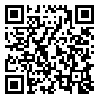1. Anderson & Elloumi, F. (2003). Theory And Practice of Online Learning (pp.6795). Athabasca University, Retrieved From cde. Athabas cau.ca/ onlinebook.
2. Anderson, John.R. (2005) Learning and Memory (An integrated approach).Carnegie Mellon University
3. Armitage, S. and O'Leary, R. (2003) E-learning series: A guide for learning technologist. Heslington: LTSN Generic Centre.
4. Bonk، C. J. (2002). Online training in an online world، retrieved from: CourseShare.com.
5. Garrison, D.R & Anderson, T. (2005). E Learning: A Framework for Research and Practice. Publisher: Rourledge Palmer. Retrieved from: http:// www. Taylor and Francis. Co. UK/ shopping- cast/ products.
6. Harris, M. (2000). Virtual Learning and the Network Society. London: Rutledge Palmer [
DOI:10.1080/13691180010002189]
7. Hoy, W. and Miskel, Cecil, G. (2005).Educational admistration (Theory, research and practice), newyork, Randomhous.
8. Leonard, B. (1996). "Distance learning: work and training overlap", HR. Magazine, Vol. 4 No. 4, pp. 40-7.
9. Meridith Wentz, (2003). "Learning Effectiveness from a Student's Perspective, Teaching and Learning Center/College.
10. Minton، M. C. (2000). Is your organization ready for e learning? Seven key questions you need to answer. Communication Project Magazine. Retrieved from http://www.comproj.com/Minton.htm
11. Peter W. Stonebraker and James E. Hazeltine. (2004). "Virtual learning effectiveness: An examination of the process", Northeastern Illinois University, Chicago, Illinois, USA, The Learning Organization, Vol. 11 No. 3. [
DOI:10.1108/09696470410532987]
12. Shea-Shultz، H.، & Fogarty، J. (2002). Online learning today: Strategies that work، San Francisco، CA: Barrett-Koehler.
13. Spiros Ap. Borotis، and Angeliki Poulymenakou (2004). E-Learning readiness components: key issues to consider before adopting e-Learning interventions. In e Learn 2004 Conference Proceedings، pp. 1622-1629، November.
14. Tucker. P. Jan & Gentry. R .Gary (2009). Developing an e-learning strategy in higher education. Journal of foresight.vol 11.No 2. [
DOI:10.1108/14636680910950147]
15. Venugopal, R. Manjulik, S. (2002). The Changing Context of Higher Education in the 21st Century. In: Toward virtualization, open Distance Learning, London.
16. Abedini, A., and Farahani, A. (2009).Virtual University in Iran: the benefits and obstacles. International Conference on e learning and teaching. Tehran: University of Science and Technology.
17. Farhadi, Robabeh. (2005). ELearning: new paradigm in the information age. Journal of Information Science and Technology. Vol 1. No 1.
18. Shahraki poor, Hassan. Benisi, parinaz. (2006) . E learning. Peyke noor jurnal. Fourth year. Vol 3. pp 43 .
19. Razavi, Seyed Abbas. (2005). E learning. Journal of Educational Development. Vol 1.pp 55.







